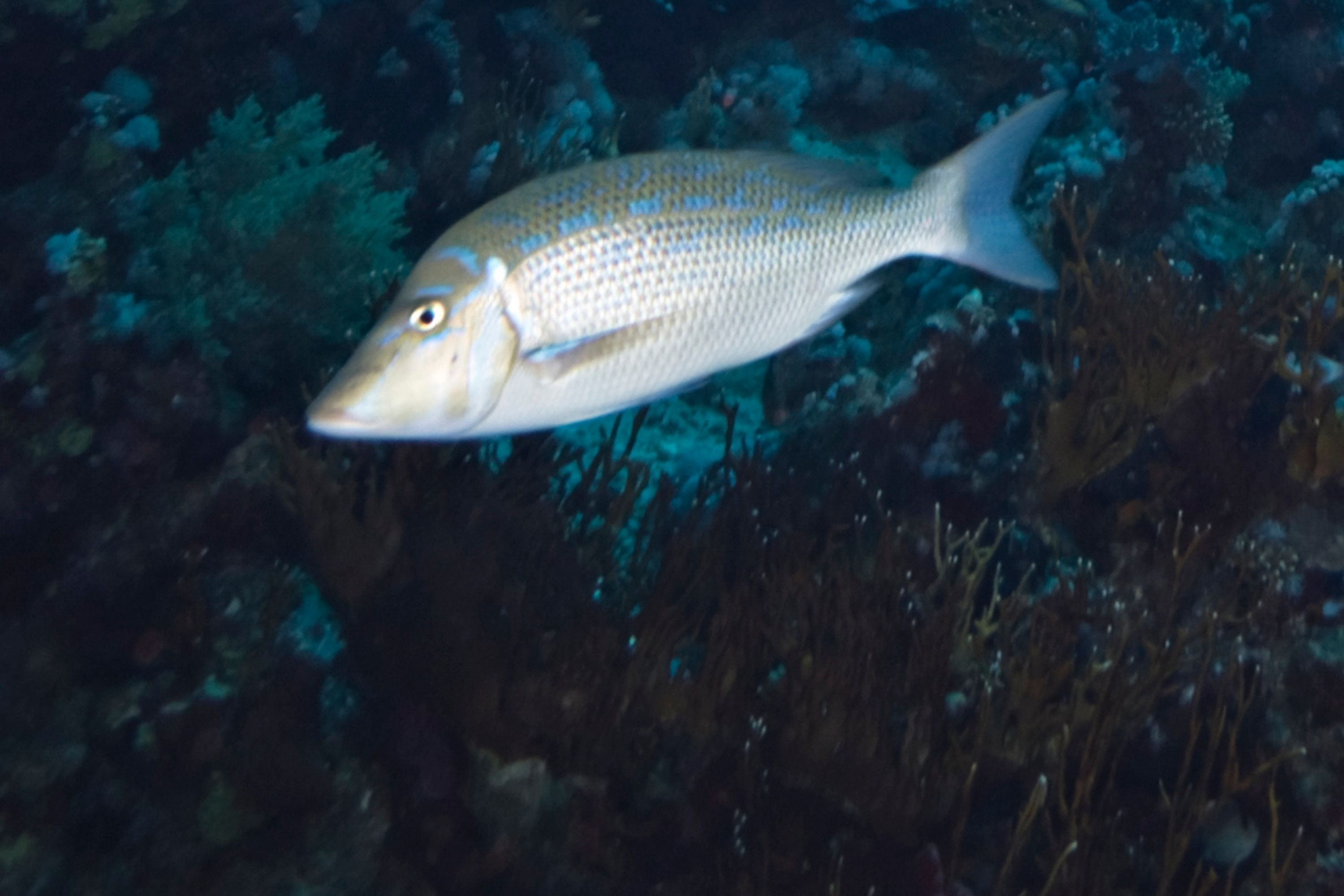Spangled emperor
(Lethrinus nebulosus)

Description
Lethrinus nebulosus is a species of emperor fish. Common names include spangled emperor, green snapper, morwong, north-west snapper, sand bream, sand snapper, sixteen-pounder, Sharie, Sheri and yellow sweetlip. This species commonly grows to approximately 70 cm in length, however the largest individuals have been found to be 87 cm. It is yellow to yellowish-brown or bronze in colour, the belly being lighter. It has scattered blue markings over the body. The cheeks have no scales and may have a vertical blue markings. It has whitish or yellowish fins with a yellowish-edged dorsal fin. This fish occurs in the waters of East Africa to the southern parts of Japan. It also lives in Australian coastal waters, and has been recorded in the Red Sea, Persian Gulf and New Caledonia, where it is one of the major commercial fish. Lethrinus nebulosus inhabits both marine and brackish waters at depths of between 10 and 75 metres. It is a non-migratory species, and is found on coral and rocky reefs, seagrass beds, mangrove swamps, as well as over sandy substrates. Juveniles may be found in large schools. This species feeds mainly on mollusks, echinoderms, and crustaceans. It also eats polychaetes and other fish, but less commonly. Lethrinus nebulosus is sought after by recreational fishers and is considered to be delicious. As with most fish, Lethrinus nebulosus is the host of many species of parasites. Monogeneans parasitic on the gills include the diplectanids Calydiscoides difficilis, Calydiscoides duplicostatus and Calydiscoides terpsichore, an ancyrocephalid, and an unidentified polyopisthocotylean. Spangled Emperor are a very commonly found fish in many locations. They can be found around East Africa, Japan, Australia, the Persian Gulf and the Red Sea. They usually inhabit waters 20-300 meters deep, but can be found shallower, more commonly near structure. Being a good eating fish, over exploitation of this species has significantly decreased the population especially in the Persian Gulf, where the development of Emirati fishing vessels has considerably decreased the amount of 'Sheri' or 'Sherry' caught. However, it is still being caught at near sustainable numbers, and its offshore populations remain of lower concern. Around 3000 tons of Lethrinus nebulosus is caught every year around the Persian Gulf.
Taxonomic tree:







